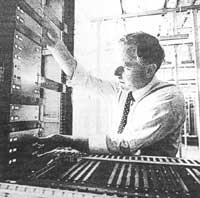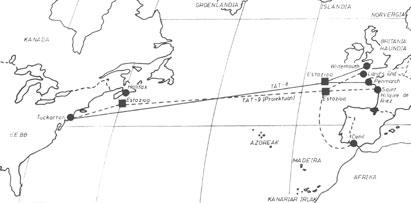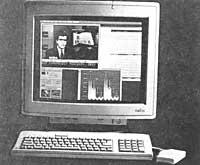Fiber Optics: About to Reach Homes
1988/08/01 Tapia, Xipitri Iturria: Elhuyar aldizkaria

In 1970 the US company "Corning Glass Works" manufactured the first optical fiber for data transport. Since then, optical fibers have boosted international telecommunications. In Britain, Canada, Japan and the US in particular, copper wires from telephone networks have been replaced by optical fibers.
A fiber can replace ten, one hundred or thousands of telephone cables, but it is not the only advantage it has. Several companies have begun offering new services such as video phones, cable TV and video libraries. In addition to these, connections between phones and computers can offer other services in the future.
Currently, the cost for the user for these services amounts to 250,000 pesetas. is estimated to be around. However, this cost will decrease and increase that of copper structures.
Investment costs are known to be defined in the best possible way, but there are still significant differences in the estimation of costs made by different technicians. However, everyone agrees that the appeal of fiber optics lies in the supply of low-cost services.
The first fiber application proposal in households was made by John Fulenwider, who worked at a Massachusetts company, but it was the Japanese who made the first practical construction. In 156 households in Higashi-Ikoma, between Kyoto and Osaka, an integrated fiber optic system was created. Its inhabitants had several services through this system, but the telephone service could not be implemented. The reasons were of two types: on the one hand, economic and on the other, political.
In Canada optical fiber was also used in two small villages. Music, videos, video tests and phones were integrated; in this case the costs were considerably lower than those of Japan.

Smaller scale trials were conducted in Britain and Germany, but France was the only state to conduct a high-level trial. The technology used in this case was more developed than that used on previous occasions. (To learn about Biarritz's experience, see Elhuyar magazine number 4.)
By the end of 1986 the company British Telecom had installed 300,000 km of fiber in Britain.
However, the US currently hosts the real fiber optic market. In 1986 alone, telecommunications companies installed a million kilometers of fiber. Hundreds of millions of dollars are being spent in the trials that are being conducted, but competition problems are now at the top. The toughest competition is in cable television companies. They need to distinguish between the world of television and telecommunications. In addition, regardless of the economic advantage, the cable has some technical advantages over optical fiber. According to experts, the evolution of telecommunications goes beyond the revolution, that is, for a few years cables and optical fibers are going to be together in the telecommunications systems that are going to be installed and the next century optic.

Gai honi buruzko eduki gehiago
Elhuyarrek garatutako teknologia





